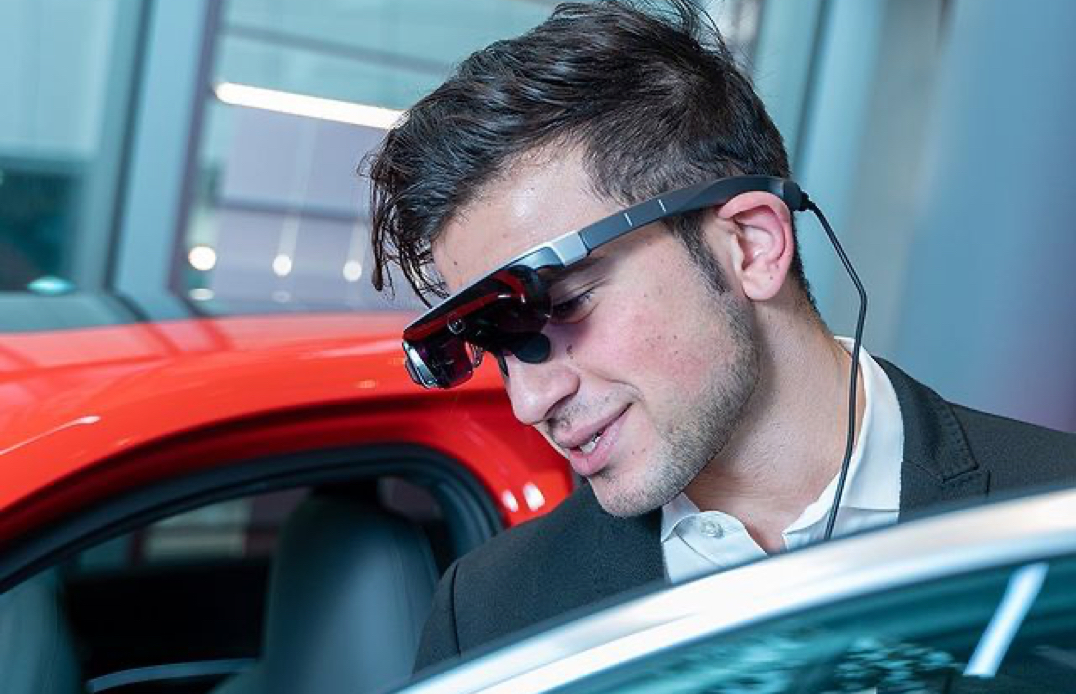
Many thanks to all who registered for and participated in Rokid’s April 20 “AI on AR tech trends” webinar! Along with surveying the latest trends in AI/AR tech, the webinar gave us the opportunity to lay out our products’ roadmap and explain why we’re focused on and developing AI/AR products, and how we’re successfully combining the two technologies.
1. PRODUCT VISION AND ROADMAP
Rokid’s product vision is quite simple and straightforward: to leverage our voice and vision AI technologies to create a smart assistant capable of improving the quality of daily life while offering users an unparalleled augmented reality experience.
Since establishing Rokid in 2014, Rokid founder and CEO Misa Zhu’s own roadmap has been every bit as clear, with an arc encompassing Home AI, Portable AI, and – ultimately – Personal AI. Rokid’s first product, Alien, delivered on our concept of Home AI. Pebble, Rokid’s second product offering, instantiated our idea of Portable AI.
2. WHY AI ON AR?
Over the past three years, we’ve put a lot of thought and research into figuring out what form the idea of ‘Personal AI’ should take. Would it be earphones? A watch? Glasses, or a button? Or, perhaps, some entirely different type of wearable device? In the end, after carefully weighing the pros and cons of numerous ideas, we decided that AR glasses, with an embedded AI assistant, offered the truest and most compelling expression of what Personal AI can and should be.
Underpinning the overall user experience are rapid advances in areas such as Computer Vision, Deep Learning, and Natural Language Processing. The accuracy of Computer Vision, for instance, now rivals our own human ability when it comes to image recognition. New dedicated AI chips are accelerating the rate at which Deep Learning occurs, and stunning improvements in Natural Language Processing are now making human-machine voice interaction increasingly more intuitive.
These technological advancements are giving rise to entire new ecosystems in which AR-enhanced apps and content are converging, as evidenced by the AR already being used by millions upon millions of people who interact with their smartphones on a daily basis.
3. WHAT IS OUR PRODUCT SOLUTION?
Guiding our thinking throughout the process has been the desire to provide not only the ability to merge the digital and physical worlds, but also to provide an unsurpassed user experience that smoothly incorporates sophisticated visual and voice elements. Specifically, an experience that can, among other things, make it possible to easily find your way around an unfamiliar city, remind you of an old friend’s latest status, and instantly translate a foreign-language restaurant menu into your own native tongue.
The overwhelmingly positive reaction among visitors who tried out Rokid Glass at CES resoundingly confirmed that our vision for Personal AI was correct. Users were highly impressed by the advanced face and object recognition capabilities of Rokid Glass, and by such features as being able to quickly and accurately access the name and other identifying information of someone who’s name you have perhaps forgotten in the moment.
Also expressing keen interest in Rokid Glass at CES were those representing museums, intrigued by the prospect of being able to offer additional information on works of art. Retailers, too, were inspired by the potential for displaying product specifics, reviews, and price comparisons in their brick-and-mortar stores.
4. PRODUCT UPDATES
Among the various metrics used to evaluate head-mounted displays (HMDs), weight, field-of-view (FOV) and price are probably the most often cited. For the devices currently available on the market, weight typically ranges from <50 grams=”” to=””>500 grams, which is a major factor in terms of the wearability of the headset/glass. Not surprisingly, a large FOV delivers a significantly better immersive experience. However, it also would require a trade off in terms of weight and appearance. The challenge is to strike a balance between two extremes; on one end, a “VR-like” big-FOV bulky helmet, and on the other a nice-looking small-FOV “smart glass.” We at Rokid believe we’ve found that “sweet spot” in between, combining optimal wearability and a high degree of immersiveness. Moreover, at a price point that is consumer-friendly.
From a variety of possible optical solutions, we selected a high-resolution (720p) color-vivid OLED micro-display, combined with an ultra-thin single freeform lens we ourselves designed. This superlative optical solution provides a FOV of approximately 33 degrees. What’s more, its high degree of optical efficiency significantly lowers power consumption. It also possesses the most design-friendly form factor to guarantee wearability. Taken as a whole, the entire hardware system embodies the spirit of extreme design. Its industrial design delivers a fashionable and streamlined shape, and stands out among the crowd of traditionally bulky AR glasses and/or helmets. In their use of supremely lightweight materials, our mechanical engineers also ergonomically nailed it. A powerful CPU empowers the cameras, IMU, touch sensor, microphones and speakers, which altogether promise an interactive user interface through touch pad, voice and gesture control. With all the functionalities integrated together, the Rokid Glass system runs independently over both Bluetooth and WiFi, without needing to be tethered to a computer. All this is with a total overall weight of just 130 grams.
Rokid Glass is built upon a customized Android OS, making it possible for us to provide SDKs that feature our own developed algorithms. These include (but are not limited to) a gesture and voice-controlled user interface, and computer vision algorithms that include both face recognition and object recognition. Furthermore, developers will be able to use our SLAM SDK to do localization and mapping to create their own unique ways of interacting within a 3D space using Rokid Glass.
We are very happy to share and discuss our thoughts and projections on ongoing tech trends, and our vision for solutions involving our products. The webinar video is now available online: https://youtu.be/fNAxyk0eT9Y
